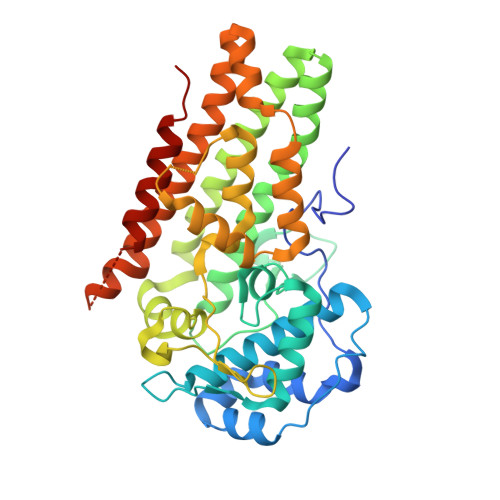Immune-modulating enzyme indoleamine 2,3-dioxygenase is effectively inhibited by targeting its apo-form.
Nelp, M.T., Kates, P.A., Hunt, J.T., Newitt, J.A., Balog, A., Maley, D., Zhu, X., Abell, L., Allentoff, A., Borzilleri, R., Lewis, H.A., Lin, Z., Seitz, S.P., Yan, C., Groves, J.T.(2018) Proc Natl Acad Sci U S A 115: 3249-3254
- PubMed: 29531094
- DOI: https://doi.org/10.1073/pnas.1719190115
- Primary Citation of Related Structures:
6AZU, 6AZV, 6AZW - PubMed Abstract:
For cancer cells to survive and proliferate, they must escape normal immune destruction. One mechanism by which this is accomplished is through immune suppression effected by up-regulation of indoleamine 2,3-dioxygenase (IDO1), a heme enzyme that catalyzes the oxidation of tryptophan to N -formylkynurenine. On deformylation, kynurenine and downstream metabolites suppress T cell function. The importance of this immunosuppressive mechanism has spurred intense interest in the development of clinical IDO1 inhibitors. Herein, we describe the mechanism by which a class of compounds effectively and specifically inhibits IDO1 by targeting its apo-form. We show that the in vitro kinetics of inhibition coincide with an unusually high rate of intrinsic enzyme-heme dissociation, especially in the ferric form. X-ray crystal structures of the inhibitor-enzyme complexes show that heme is displaced from the enzyme and blocked from rebinding by these compounds. The results reveal that apo-IDO1 serves as a unique target for inhibition and that heme lability plays an important role in posttranslational regulation.
- Department of Chemistry, Princeton University, Princeton, NJ 08544.
Organizational Affiliation:

















